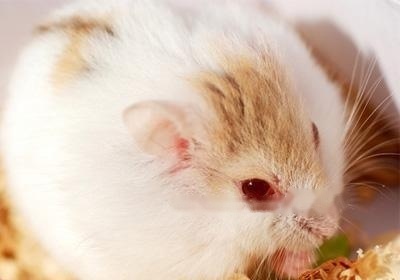
Amber Hamster
Length: 10-12cm
English name: White Crested Guinea Pig
Personality: docile
Origin: South America
Lifetime: 10 years
White CrestedGuinea pig is covered with snow-white fur, with a phoenix crown on the top of its head, red eyes and black eyes, alias Dutch mouse, guinea pig, guinea pig, guinea pigs, Guinea pigs, their ancestors came from the Andes Mountains in South America and were developed by European traders in the 16th century When brought to the West, people liked this little animal very much and kept it as a pet breeding. They are docile, lovable, and relatively easy to care for, and are still common household pets today. Some organizations in the world are scrambling to breed guinea pigs, and people have bred a variety of Variety.
A wide variety of guinea pigs were developed after being shipped to Europe and North America. Mainly reflected in the difference between hair and color. The most common pet breed is the English guinea pig, which has short, smooth fur , Abyssinian hair does not stand up smoothly. Peruvian and Shetland species are also common pet breeds with fur Straight and long, while the Texel has long curly hair.
White CrestedGuinea pigs have snow-white fur, a phoenix crown on top of their heads, and red and black eyes. Body length 22-34 cm, weight 400-700 grams, short, thick and round body, large head, large, round and bright eyes, round ears, split upper lip, short ears; short limbs, 4 toes on front feet and 3 toes on hind feet , with no outer tail.
guinea pigs are smart, lively, docile, obese and cute, timid, and sometimes squeak, and prefer a dry and clean living environment. They love to eat, sleep, and breed, which is where they are similar to pigs in the usual sense.
Its main food is weeds, and it likes to eat grass and vegetable leaves. Coupled with a point of concentrated feed to gain half the weight. In winter, corn stalks, wheat stalks, straw, peanut seedlings, etc. can be crushed and added with bran to meet the needs of growth.